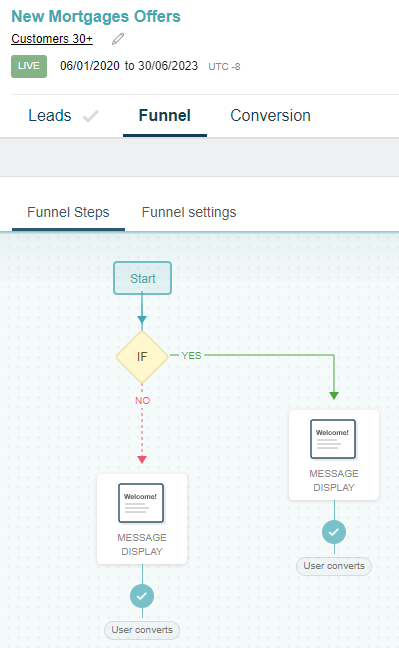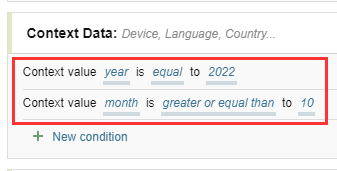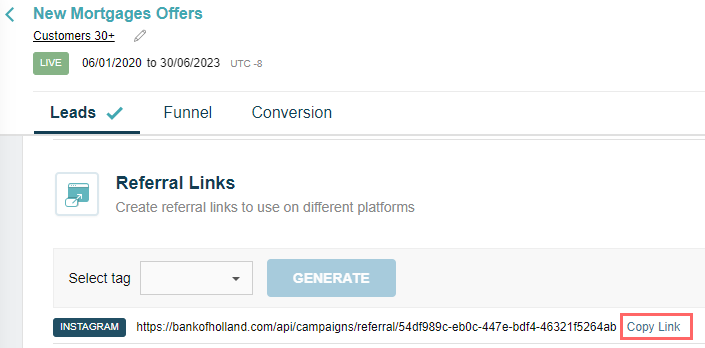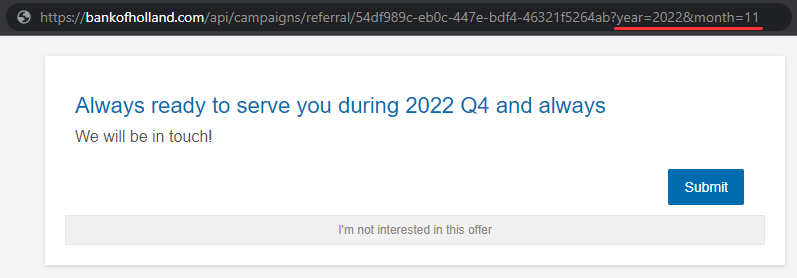Using Referral Links Parameters to Condition the Funnel
Referral links enable you to create anonymous URLs that lead to the campaign funnel. To condition the course from that point onwards, you can add parameters to build a query string. Depending on the values of those parameters, the customer will take different paths in the same funnel.
The straightforward example below illustrates how to present the customer with distinct alternatives based on the query string. The same concepts apply to more complex cases with other types of user interactions. For example, you can display the funnel in different tongues by adding the language as an URL parameter or share the links on social media and show a specific message for each network.
Adding a New Condition in the Funnel
The following image shows a conditional IF step with two message displays - one in the YES and another in the NO route:

To add one or more conditions to the block, proceed with these steps:
-
Select the block and hit the Edit step button. Next, click New condition under Context Data:

-
Choose [Context against value] from the list:

-
Repeat steps 1 and 2 as many times as needed.

As you can see, there are two conditions above (year = 2022 and month >= 10)
-
Save the conditions and confirm that they appear in the step description:

Appending and Validating Parameters in a Referral Link
To use a referral link, ensure the channel is enabled in the Leads section and:
-
Copy the referral link you want to use:

-
Append the parameters in the form of a query string. To do so, put a question mark after the URL and add the parameters with the values you want to assign. When there are two or more, separate them with an ampersand (
&).For the referral link above, an example URL that matches both conditions would be https://bankofholland.com/api/campaigns/referral/54df989c-eb0c-447e-bdf4-46321f5264ab?year=2022&month=11.
-
Save and publish the changes to the campaign.
-
Go to the URL and verify that the message display looks as expected:

-
Compare it with the result of entering a link with non-matching parameters (https://bankofholland.com/api/campaigns/referral/54df989c-eb0c-447e-bdf4-46321f5264ab?year=2023&month=1, for example):

Related Articles
On this page